
Today’s post is the second in our series of book reviews.
Old Age and Disease in Early Modern Medicine by Daniel Schäfer (Pickering and Chatto, 2011)
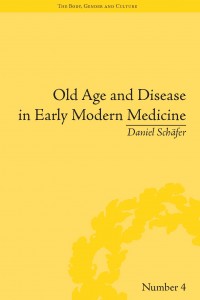 Schäfer begins Old Age and Disease (after a brief introduction outlining his sources and methodology) with an exploration the influence of the ancient medical writers on early modern understandings of old age, particularly Aristotle, Hippocrates and Galen. He demonstrates that, unlike today, most early modern people accepted that old age began around 50. This is not surprising given that life expectancy was around 30 years and it would have been rare for medical writers to meet people in their 80s and 90s. One of the key ideas taken from the ancients was that the life-cycle was divided into distinct phases – for example Galen adopted a four-part scheme with each age corresponding to a season, old age being winter. Early modern authors also adopted ancient words for old age – particularly the last age of man – that allowed them to play on the idea that it was a time to prepare for the grave, like silicernium which translated as a funeral feast. There were, broadly speaking, two understandings of old age perpetuated in both the ancient and early modern literature, one ridiculed and lamented the bodily and mental decline of the old while the other sought veneration for the wisdom and freedoms age brought.
Schäfer begins Old Age and Disease (after a brief introduction outlining his sources and methodology) with an exploration the influence of the ancient medical writers on early modern understandings of old age, particularly Aristotle, Hippocrates and Galen. He demonstrates that, unlike today, most early modern people accepted that old age began around 50. This is not surprising given that life expectancy was around 30 years and it would have been rare for medical writers to meet people in their 80s and 90s. One of the key ideas taken from the ancients was that the life-cycle was divided into distinct phases – for example Galen adopted a four-part scheme with each age corresponding to a season, old age being winter. Early modern authors also adopted ancient words for old age – particularly the last age of man – that allowed them to play on the idea that it was a time to prepare for the grave, like silicernium which translated as a funeral feast. There were, broadly speaking, two understandings of old age perpetuated in both the ancient and early modern literature, one ridiculed and lamented the bodily and mental decline of the old while the other sought veneration for the wisdom and freedoms age brought.
This first chapter also explores the physiology and pathology of ageing cultivated from ancients theories. Numerous factors were thought to cause ageing including temperature, the state of the blood and seminal fluids and the air. Cold was associated with both old age and death. One theory stated that a constant diminishing of the body’s internal vital heat was the cause of both of these phenomena. Similarly the body was thought to undergo a drying out process, like plants and leaves in the autumn which led to wrinkled skin, ageing and eventual death. The specific physiology of the ageing body, Schäfer explains, was also linked to several illnesses including bladder stones and coughing. Yet means to treat illnesses in old age were not mentioned as frequently, by ancient authors, as means to prevent old age and means to preserve health in old age. Nearly all cultures included some means of extending life-span such as gold, ambergris or vipers flesh.
Having surveyed the texts and theories available to early modern medical men on the subject of old age, Schafer moves on to look at the competing theories of aging and old age that existed in the early modern period itself – the Islamic-Galenic idea of elderly physiology and geroconomy and the ideas about extending life favoured by alchemists and iatro-chemists. These models were not mutually exclusive but often mixed.
The second chapter examines various genres of medical literature that discussed old age, including general medical treatises and the works of Paracelsus and van Helmont. The main one being ‘gerocomies’ a genre which united a variety of medical monographs, linked by the prominence they afforded to dietetics. Perhaps unsurprisingly Schäfer reveals that several of these texts were produced by ‘old’ men. They considered the physiology of the old body and the limits of old age and sought to formulate dietary guidelines and medicines that would sustain health. As the period progressed these works became increasingly sophisticated in their discussions of the pathologies and signs of ageing. They also increasingly focused on the illnesses of the elderly as opposed to the external signs of aging – white hair, baldness and wrinkles. These works encouraged old men to live by medicine’s rules but without medical help and interventions. Accordingly advice about lifestyle took pride of place, covering each of the six non-naturals. Additionally, these texts offered remedies (internal and external) for old age. One remedy, shunamitism, advocated having a young child lie on an old person’s stomach in order to warm the patient. These texts Schäfer argues were the first to bring together ideas about medicine and the elderly, drawing on ancient and Islamic traditions they created a structure through which the elderly body could be understood.
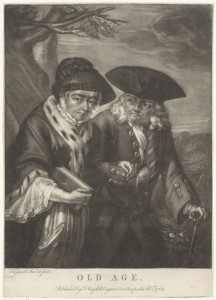 The third chapter investigates texts produced in early modern universities and the notable shift in understandings of old age that occurred after 1650. This shift occurred in both form and content, as dietetics were gradually rejected in favour of physiology, pathology and pharmacology. Moreover, after 1700 there was a rejection of Galenism amongst some authors. Iatrochemical (aging caused by a decline in fermentation and digestion) and to a greater extent iatromechanical (ageing caused by the hardening of vessels which slows the movement of fluids around the body) ideas become more dominant as the period progresses. Understanding of elderly illness also moved from a holistic framework towards the ideas of age-related organ ailments. This was accompanied by an increase in the number of diseases the aged were thought to suffer from and a greater use of case studies in writings on old age. Finally after 1650 there is a much greater tendency to understand old age as a disease that led to death. Outside of university works, Schäfer reveals, existed a varied and eclectic set of texts that drew upon and mingled old and new ideas to form unique accounts of old age.
The third chapter investigates texts produced in early modern universities and the notable shift in understandings of old age that occurred after 1650. This shift occurred in both form and content, as dietetics were gradually rejected in favour of physiology, pathology and pharmacology. Moreover, after 1700 there was a rejection of Galenism amongst some authors. Iatrochemical (aging caused by a decline in fermentation and digestion) and to a greater extent iatromechanical (ageing caused by the hardening of vessels which slows the movement of fluids around the body) ideas become more dominant as the period progresses. Understanding of elderly illness also moved from a holistic framework towards the ideas of age-related organ ailments. This was accompanied by an increase in the number of diseases the aged were thought to suffer from and a greater use of case studies in writings on old age. Finally after 1650 there is a much greater tendency to understand old age as a disease that led to death. Outside of university works, Schäfer reveals, existed a varied and eclectic set of texts that drew upon and mingled old and new ideas to form unique accounts of old age.
The final chapter sets out early modern understandings of women who only appeared marginally in the writings on old age and ageing. One reason for this was that women were all but absent from the ancient treatise early modern writers looked to in their own works. One major feature of pre-modern writings on elderly women was the scorn with which their bodies were viewed. In women old age was fixed as occurring at 50 with the loss of fertility. Accounts of menopause and its symptoms were rare before the 1780s but medical texts did discuss some uterine ailments associated with ageing. Some non-uterine diseases were also associated with elderly women including gout and dropsy. To alleviate the symptoms experienced by old women medical texts recommended venesection, coitus and sleeping alongside younger people. However, Schäfer concludes that it is difficult to reconstruct a clear picture of the old women at this time.
 Throughout the book it is revealed that even though it was not a central theme of discussion and was ignored by some famous medical professors, proto-geriatrics was a feature of the early modern medical landscape. The book’s chapters are divided into neat quick to read sections, which allows readers to pick and choose particular themes of information. Yet this division and subdivision of the text interrupts the flow of the prose and in places suggests a rather list-like approach to imparting the vast amount of information Schäfer has gathered. Similarly the continued use of numbered lists for key ideas gives the book a rather ‘bullet-point’ feel. In places the book is also rather dense and technical, which perhaps limits its accessibility for a non-academic audience. Even so, Schäfer has surveyed a vast amount of literature and provides an impressively knowledgeable and comprehensive assessment of the understanding of old age throughout the early modern period and across Europe. He also gives clear consideration to the form, traditions and influences of different genres of texts creating a complex mapping of where and how ideas were expressed and modified. In these respects in particular this book represents a clear and considerable addition to the existing historiography.
Throughout the book it is revealed that even though it was not a central theme of discussion and was ignored by some famous medical professors, proto-geriatrics was a feature of the early modern medical landscape. The book’s chapters are divided into neat quick to read sections, which allows readers to pick and choose particular themes of information. Yet this division and subdivision of the text interrupts the flow of the prose and in places suggests a rather list-like approach to imparting the vast amount of information Schäfer has gathered. Similarly the continued use of numbered lists for key ideas gives the book a rather ‘bullet-point’ feel. In places the book is also rather dense and technical, which perhaps limits its accessibility for a non-academic audience. Even so, Schäfer has surveyed a vast amount of literature and provides an impressively knowledgeable and comprehensive assessment of the understanding of old age throughout the early modern period and across Europe. He also gives clear consideration to the form, traditions and influences of different genres of texts creating a complex mapping of where and how ideas were expressed and modified. In these respects in particular this book represents a clear and considerable addition to the existing historiography.

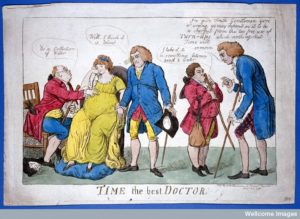
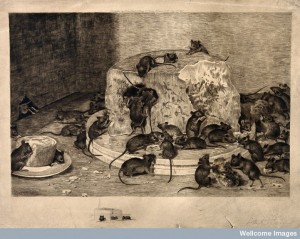
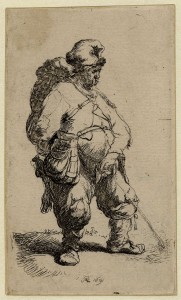
One thought on “Review: Old Age and Disease”
Comments are closed.